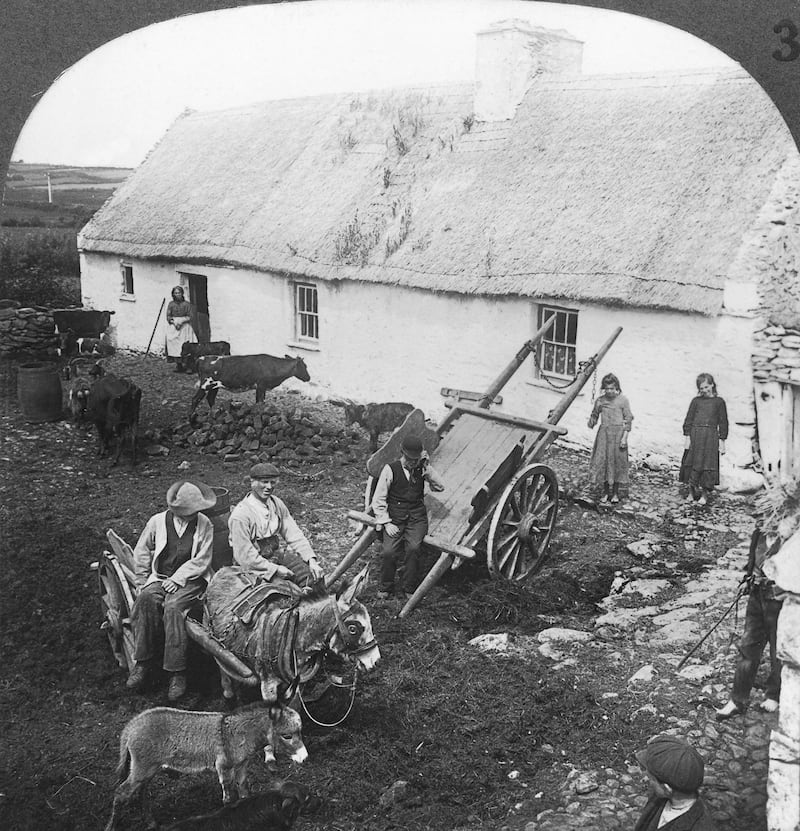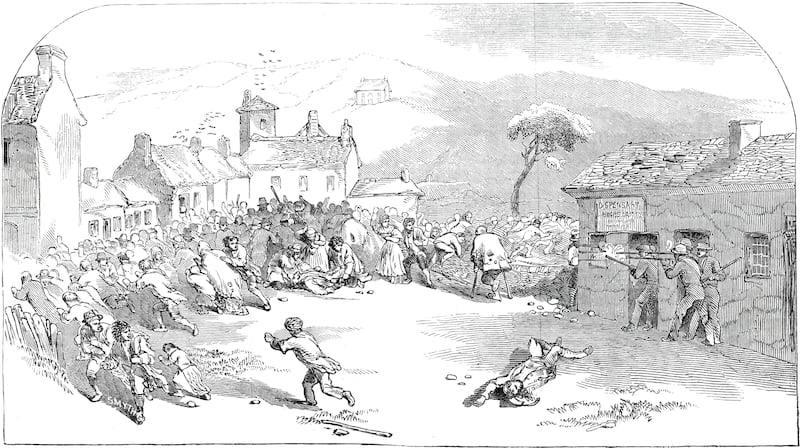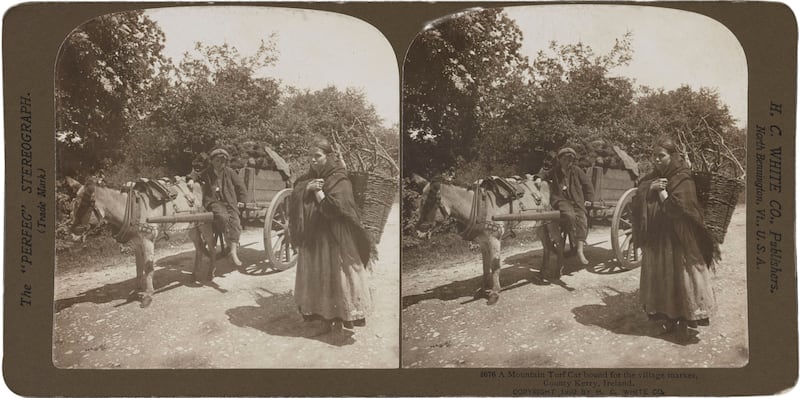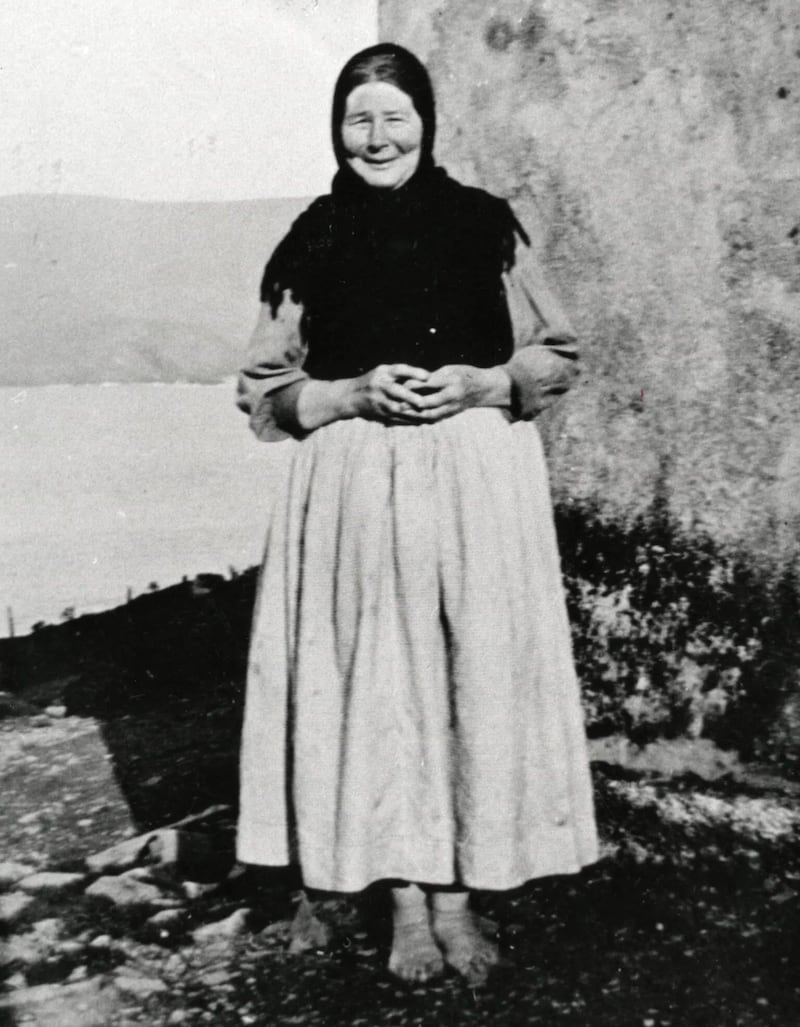Peig Sayers has made it in LA. Or to be more precise, in the Los Angeles Times. Since Colm Bairéad’s film An Cailín Ciúin was nominated for this year’s Oscars, the newspaper is just one of the US media outlets that have published articles about the Irish language – including, inevitably, her infamous autobiography.
The familiar claim is that Peig is such a depressing, unrelatable story of hardship and woe, in which Sayers complains from start to finish about her terrible misfortune, that it puts school students off speaking the language for life.
Yes, the poverty it depicts is a tragedy – but so is the domestic violence of Purple Hibiscus, the organ harvesting of Never Let Me Go and the Nazi occupation of All the Light We Cannot See, all of which are currently on the Leaving Cert syllabus. And even though Sayers’s memoir is about a vanished way of life in rural Co Kerry at the tail end of the 1800s, Silas Marner is about a linen weaver who lived in a northern English slum in the early 19th century, and Macbeth – a play written 400 years ago, in Elizabethan English – is about an 11th-century Scottish king.
While we think of Sayers as an old woman sitting at the fireside, most of Peig is about her life up to the age of 23: her early days in Dún Chaoin, her time living with a family in Dingle from the age of 12, a period she spent working at a farmhouse outside the town, her marriage and move to the Blasket Islands at the age of 19, and the birth of her first son.
From Baby Reindeer and The Traitors to Bodkin and The 2 Johnnies Late Night Lock In: The best and worst television of 2024
100 Years of Solitude review: A woozy, feverish watch to be savoured in bite-sized portions
How your mini travel shampoo is costing your pocket and the planet - here’s an alternative

Contrary to popular belief, the book is full of attention-grabbing, exciting and even funny stories. One of the book’s key themes is the love between Sayers and her family. She recalls how her heart jumped for joy when she heard her brother Pádraig was visiting one day; when he arrived “I ran to meet him; he took me up in his arms and kissed me lovingly.” Her sister even says of Peig’s mother’s love for her: “The dear woman thinks it’s out of your cúl the sun rises.” Cúl, in this context, means behind, or backside. (The English-language edition of Peig published in 1974 kept the word cúl, presumably to avoid printing its risqué translation.)
After primary school Peig went to live and work with Nell and Séamas Curran, who owned a shop in Dingle. Nell “was a generous, hospitable, pleasant woman and Séamas, her husband, was every bit as good as her”. On Peig’s final day with the Currans she “ran towards them and put my two hands around Nell’s neck and no daughter ever kissed a mother as fondly as I kissed Nell that day”.
She enjoyed her time in Dingle, “a place that filled me with wonder”, and also a place where she saw clashes between townsfolk and the Royal Irish Constabulary (RIC). She describes how a group of men slashed some cattle belonging to a landlord who had evicted relatives of theirs. The RIC arrested a man, Muiris Ó Sé, in connection with the attack, but he escaped after he “drew a belt of his fist across the constable’s good eye and knocked him out flat on his back”.

In another incident, a riot, the police grabbed a man who, “with his left hand clenched ... let fly into the peeler’s teeth, lifted him into the air and stretched him on the flat of his back in the channel”. The townsfolk were beating the police back until a district inspector charged the crowd on horseback.
Sayers then tells of Bríghdín Shráid Sheáin, a Dingle woman who was jailed for six months for refusing to name people who had stolen a horse from the RIC barracks. The night she returned home bonfires were lit around the town and candles placed in windows as a sign of support, “all except the homes of the loyalists ... Those windows were in smithereens by morning.”
[ You may have hated Peig at school, but don’t let that put you off these treasuresOpens in new window ]
After her period working at a farmhouse outside Dingle as an older teenager, Sayers returned to Dún Chaoin. What follows could be described as Peig: the boozing and partying years. At a send-off for a neighbour who was emigrating to North America, the host produced “a barrel of porter and a gallon of whiskey ... Then the dancing started at the other end of the house and we had revelry and applause till day brightened in the east.”
On the night of Sayers’s engagement to the Blasket Islander Pádraig Ó Gaoithín, “one of the men produced from his pocket a bottle with a long neck; bottle followed bottle until they had a fair share of drink taken and then we had no shortage of talk”. After the wedding, “the young people had music and dancing and the older people were singing and drinking ... Everyone was merry and happy as the night slipped by ... until six in the morning.”

An overlooked reason for hostility towards Sayers is that she’s a woman – we don’t know how much of the vitriol aimed at her is the result of misogyny, but we do know that women in the public eye are subjected to significantly more abuse than men.
We have a good idea of how Sayers would have responded to male chauvinism. One day, on the farm outside Dingle, she asked a labourer for help carrying a basket of turf, as she had a toothache. “That’s woman’s work,” he replied. When she asked again he told her to “go to hell”. “I caught up a half-rotten turnip that lay beside me and I flung it at him, and where did I strike him but right into the earhole! The turnip was plastered to the side of his skull,” Sayers writes. “I couldn’t help laughing at him.”
How could such a fantastic story be in the bleak, joyless book we’ve been hearing about for decades? And how could it have put people off Irish for the rest of their lives? These claims are just not credible.

Why, then, is Peig so often cited in the debate around the Irish language? It may be because Sayers just happens to share many of the characteristics that Irish people often came to associate with the language itself: she is poor, rural and old-fashioned. It’s rarely mentioned today, but for centuries many Irish people were ashamed of the language because it was spoken by the rural poor and not by the upper classes. This process, which was repeated in other colonised countries, essentially saw people blaming their poverty and marginalisation on their native language rather than on the colonial forces that impoverished and marginalised them in the first place.
Sayers is a scapegoat, a one-word explanation for people who might be embarrassed about their lack of fluency in the language. There may be many reasons why Irish people don’t speak Irish. But Peig is not one of them.
Colm Ó Broin is the creator of Conradh na Gaeilge’s Mythbusting campaign









